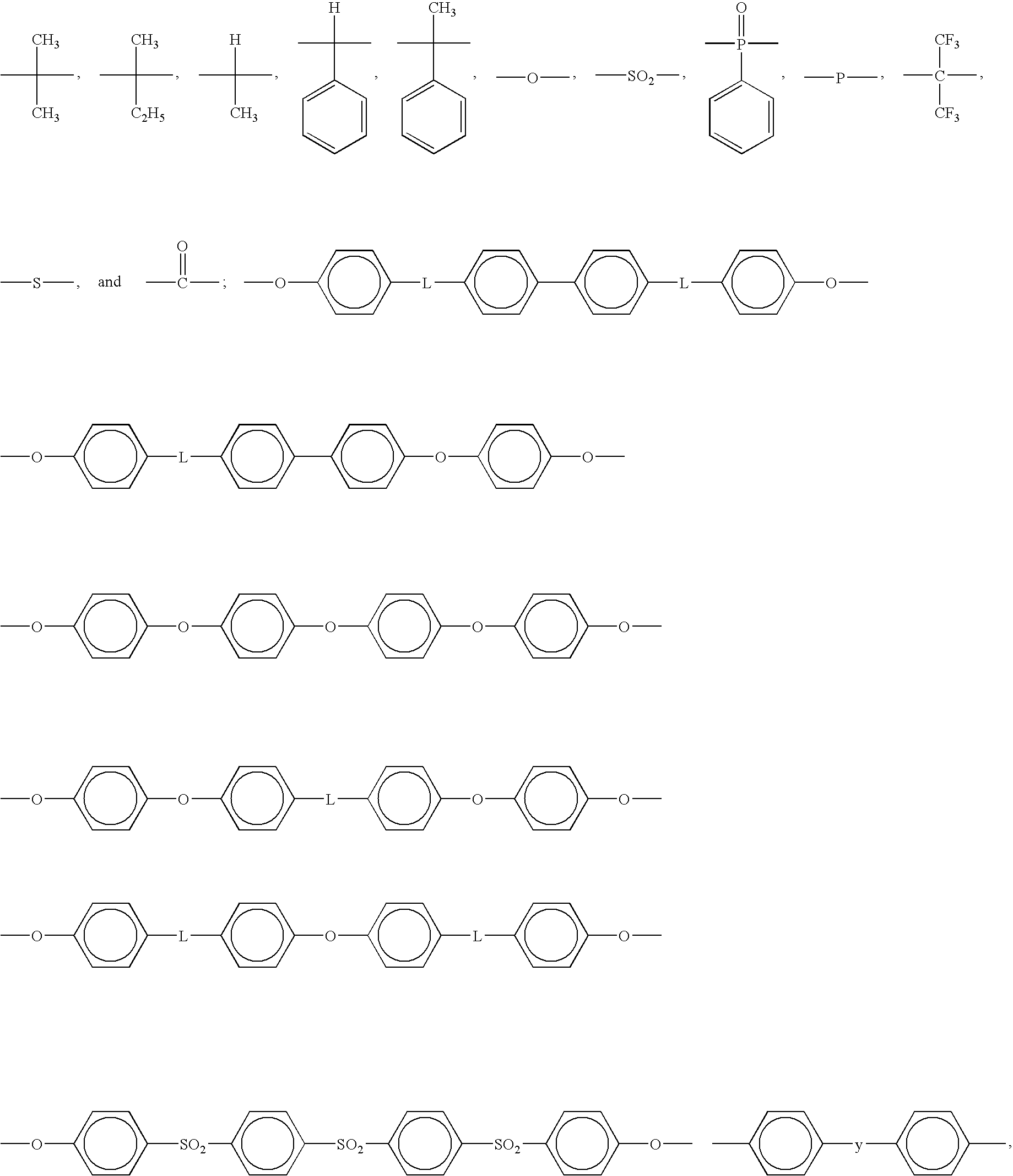Single-step-processable polyimides
a single-step, polyimide technology, applied in the field of single-step processes for synthesizing polyimide oligomers, can solve the problems of difficult handling during processing, prone to microcracking, and material deficiencies, and achieve the effects of easy melt processing, increased crosslink density, and large processing window
- Summary
- Abstract
- Description
- Claims
- Application Information
AI Technical Summary
Benefits of technology
Problems solved by technology
Method used
Image
Examples
Embodiment Construction
[0007]The present invention will now be described more fully hereinafter, in which some, but not all embodiments of the inventions are shown. Indeed, the invention may be embodied in many different forms and should not be construed as limited to the embodiments set forth herein; rather, these embodiments are provided so that this disclosure will satisfy applicable legal requirements.
[0008]Unlike PMR-based chemistries wherein, after being coated on a reinforcing material, all monomeric reactants are reacted simultaneously, volatiles are removed, and resin is cured to form a polyimide prepreg or composite, embodiments of the present invention comprise the sequential reaction of monomers such that the monomers are pre-imidized prior to the making of a composite. Accordingly, the pre-imidized resin system exhibits only one reaction mechanism, namely the single step of endcap-to-endcap reactions, during the curing and crosslinking of the resin to form a composite. Below temperatures for ...
PUM
| Property | Measurement | Unit |
|---|---|---|
| temperatures | aaaaa | aaaaa |
| pressures | aaaaa | aaaaa |
| temperature | aaaaa | aaaaa |
Abstract
Description
Claims
Application Information
 Login to View More
Login to View More - R&D
- Intellectual Property
- Life Sciences
- Materials
- Tech Scout
- Unparalleled Data Quality
- Higher Quality Content
- 60% Fewer Hallucinations
Browse by: Latest US Patents, China's latest patents, Technical Efficacy Thesaurus, Application Domain, Technology Topic, Popular Technical Reports.
© 2025 PatSnap. All rights reserved.Legal|Privacy policy|Modern Slavery Act Transparency Statement|Sitemap|About US| Contact US: help@patsnap.com



